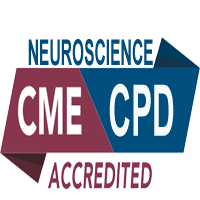
David Rowell
Queensland Brain Institute, Australia
Title: An economic evaluation of deep brain stimulation for patients with Tourette’s syndrome: An initial exploration
Biography
Biography: David Rowell
Abstract
Background: Tourette’s syndrome (TS) is a neuropsychiatric movement disorder. Symptoms of severe TS include involuntary tics, vocalizations and coprolalia, which can progress to affect adversely health related quality of life. Co-morbidities include attention-deficit/hyperactivity disorder (ADHD), obsessive-compulsive disorder (OCD) and affective disorders. Typically, treatment may involve pharmacotherapy and supportive counseling. For a small number of patients, deep brain stimulation (DBS) is now being used to treat intractable TS. The clinical outcomes have generally been positive. To date, no economic evaluation of treating TS with DBS has been published. A well-designed economic evaluation has become a pivotal ingredient to ensure that the necessary resources are directed towards the healthcare services, which offer the best patient outcomes. The aim of this research is to present an initial exploration of an economic evaluation of DBS to treat severe TS.
Methods: We conduct a cost utility analysis (CUA), which compares the direct medical costs reported as $US and outcomes reported as quality-adjusted life years (QALYs) of DBS with best medical treatment (BMT). Our sample consists of 17 patients who received DBS for severe TS at St Andrews War Memorial Hospital, Brisbane, Australia from September 2008 to February 2012. Clinical indices for (i) tic severity (Yale Global Tic Severity Score) and (ii) depression (Hamilton Depression rating Scale) and (iii) age were collected pre and post DBS. These clinical data were converted QALYs using standardized coefficients derived from a multivariate regression published by Müller-Vahl et al (2010) for a sample 200 German outpatients (R 2 = 54%). The direct costs for DBS included hardware, surgical implantation, inpatient stay, neuro-stimulator programming and adverse events. For BMT direct costs included estimates for rehabilitation, inpatient stay, outpatient treatment, pharmaceuticals and ancillary treatments. All costs were reported in $US2016. TreeAge® software was used to estimate an Incremental Cost Effectiveness Ratio (ICER) using a Markov model, with a 10-year time horizon and 3.5% discount rate.
Results: The direct costs of DBS and BMT were estimated to be $USD 124,400 and $USD 34,180, respectively. DBS was estimated to increase health utility. The ICER was estimated to be lower than the $USD 50,000 per QALY threshold used by the Federal Drug Administration (FDA).
Conclusions: Our initial exploration suggests DBS is a cost-effective treatment for patients with severe TS. However, our economic evaluation contains several limitations. Firstly, indirect costs were not included. Secondly, health utilities pre and post DBS were imputed from clinical data rather than measured directly. Thirdly, long-term costs and benefits are uncertain; an average age of 28 years at implant implies a further 50 years of life post DBS. The ICER was sensitive to estimates of adverse events. Finally, our results were derived from a small sample. Future research will administer a survey of healthcare costs and QALYs to an international database of TS patients treated with DBS maintained by the University of Florida, with the aim of developing a more robust economic evaluation.

